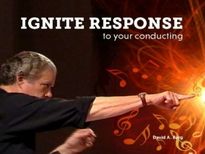This chapter is about making musicians’ bodies - their posture - our allies in creating engagement and great music. Our posture sends powerful messages to our minds. Those messages script the thoughts that create our feelings and actions, and influence our singing and playing. The better our posture, the better our music-making (and lives).
What constitutes good posture for musicians - and how to achieve it - is covered extensively elsewhere. This chapter is about creating and maintaining it in our ensembles. This usually-neglected topic can make a dramatic difference in the level of your ensembles’ music making.
1. How it Works
Posture physicalizes self-image; it’s as much a psychological issue as a physical one.
Good posture expresses a positive self-image and worldview, and sends messages to musicians’ minds like these:
“I can do this! I matter. I'm alert, capable, and ready to excel!
What I'm doing is important for the music and for my own growth.
I’m definitely going to throw myself into this!”
Poor posture expresses lower self-esteem and a negative outlook, sending messages like these:
“Everyone else sings/plays better than me.. so why even try?
If I try hard, I’ll only be disappointed again.
I’m tired and bored.”
When bodies send powerful messages like these, can telling our group, “Make a more dramatic sforzando!” or “Watch me at letter G!” be effective? Will our expressive gestures and engaging rehearsal techniques ignite the musicians’ response? Not likely if their bodies tell them not to.

